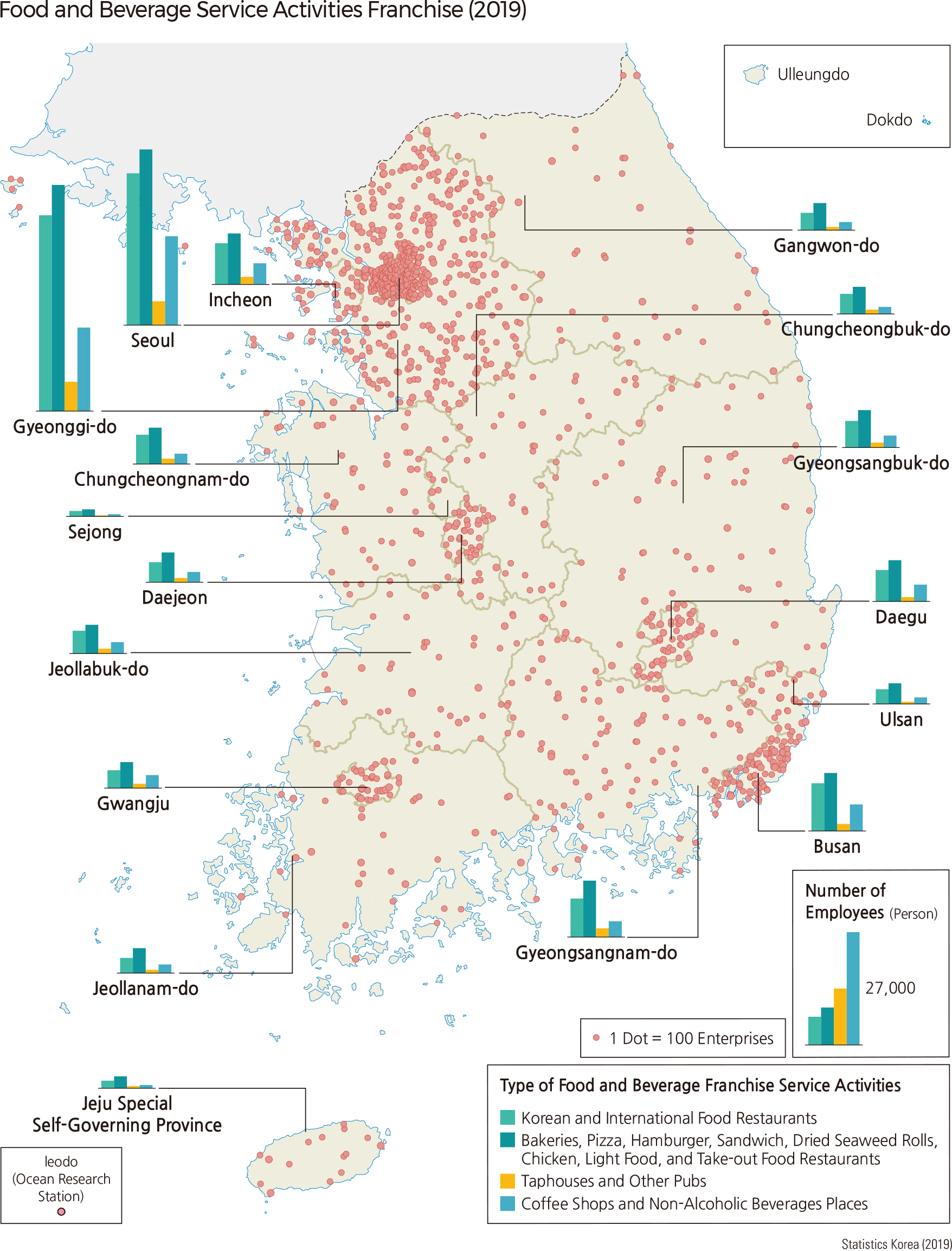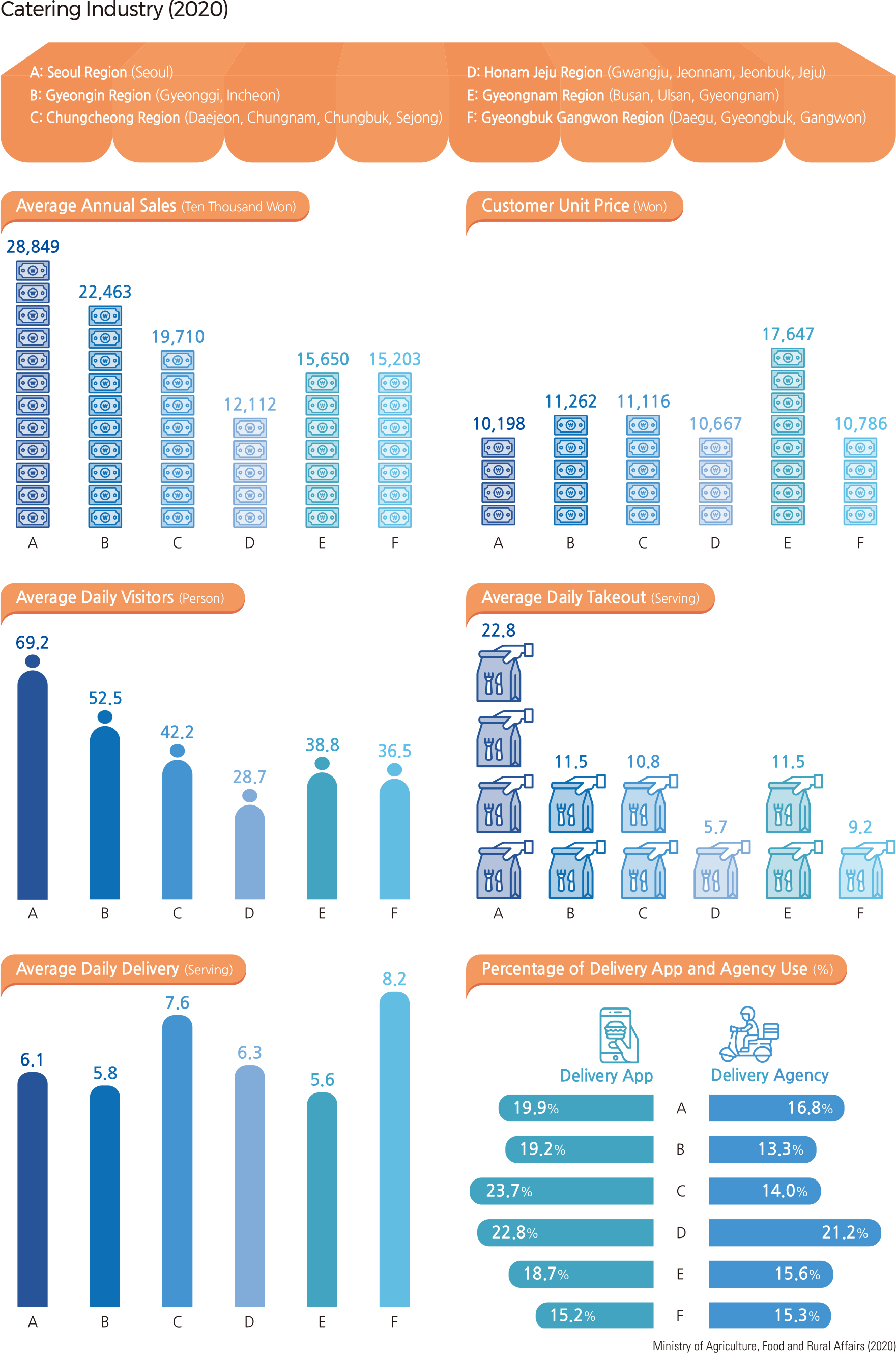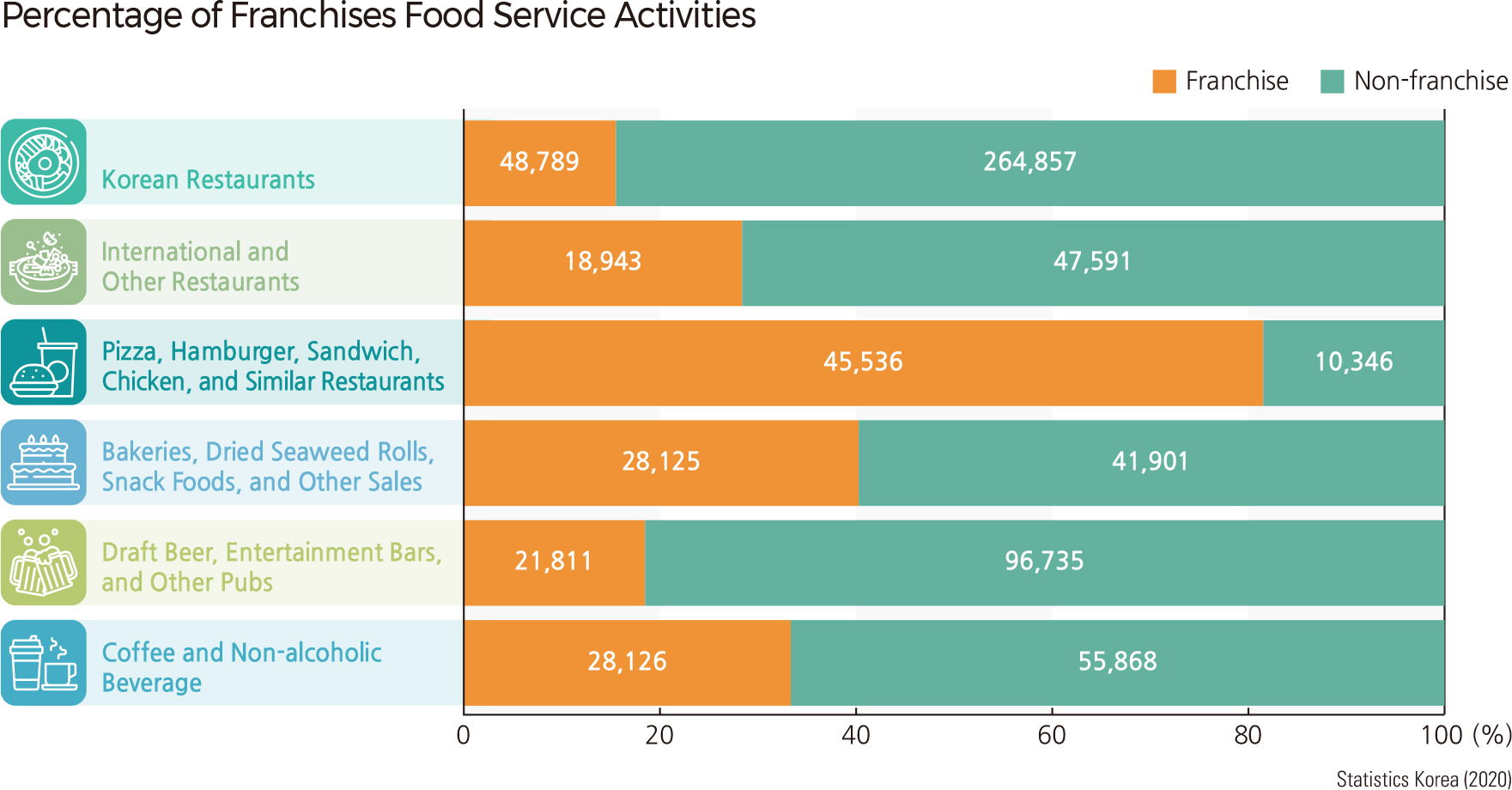English III 2021
When the places where people work and live become geographically farther apart and leisure activities become readily available, eating out away from home increases. The food and beverage service industries represent the economic activities that include any facilities for cooking and consuming food prepared for customers directly within the compound. The facilities include restaurants, diners, snack bars, cafes, bakeries, and drinking places. It also includes takeout and delivery services, catering, and cooking for customers on location upon request. Although there have been some momentary declines, the overall pattern for the establishments, employees, and sales in the food and beverage service industries have grown steadily. In 2019, there were about 727,000 total food industry establishments, with 2.2 million total employees and 125 billion US dollars in total sales. These numbers represent an increase since 2006 of 33.0% for the number of establishments, 51.1% for the number of employees, and 183.7% for total sales. Food industry establishments tend to be concentrated in metropolitan areas where the population density is higher, while lodging businesses show an overall balanced distribution pattern, including rural areas with tourist attractions. The food and beverage service industries, just like the retail industries, also are getting dominated by franchise businesses. Franchisors recruit franchisees and provide them the right to use the trade name and trademark, the right to sell products, and technology in exchange for a franchise fee. As a result, the franchisors can expand their business numerically and geographically with little capital. In addition, franchisees can enjoy attracting customers by receiving raw materials and technology and relying on the brand value of the franchise business. Consumers can receive the same reliable service in a familiar store environment in any location. As digital platform services using mobile internet are introduced into the food and beverage service industries, food delivery services are being widely provided. As the platform company receives a certain fee and handles advertising, order processing, delivery, and payment, restaurants that previously could not operate their own delivery service can expand the market. The recent increase in demand for food delivery due to the COVID-19 pandemic also contributed to the growth in the digital platform based food and beverage service industries.
|



